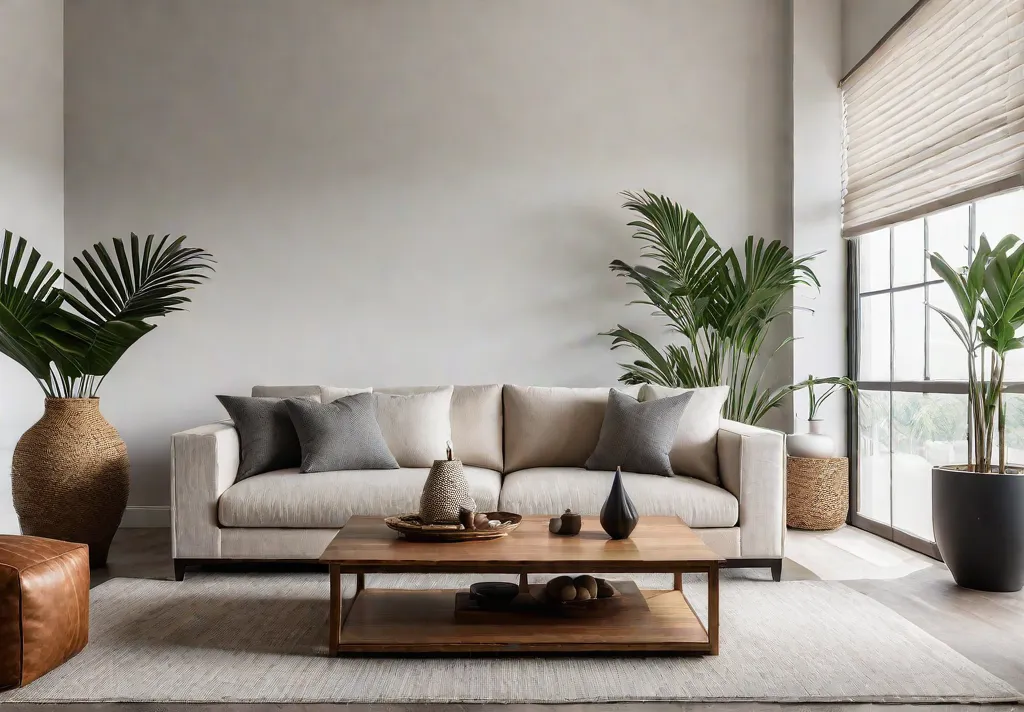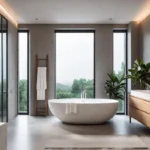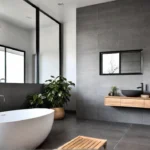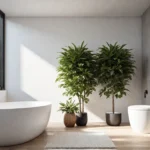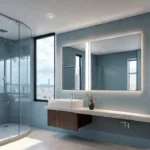As an interior designer with a passion for all things cozy and charming, I’ve always believed that a home should reflect the people who live in it. I’m excited to share my tips on moving beyond the traditional all-white minimalist living room and embracing a more vibrant, personalized approach to color and design.
I come from a long line of New Englanders who cherish the art of creating warm, inviting spaces. Growing up, our family home was filled with antique treasures, floral fabrics, and little pops of color that made every room feel like a cozy haven. And that’s the feeling I want to help you capture in your minimalist living room.
Now, I know what you’re thinking – “But Amanda, isn’t minimalism all about clean lines and a neutral palette?” Well, my friends, the modern minimalist aesthetic is evolving, and there’s so much room to play with color and texture while still maintaining that effortless, uncluttered look. In this article, we’ll explore how you can incorporate vibrant hues, natural materials, and eye-catching accents to create a minimalist living room that’s anything but boring.
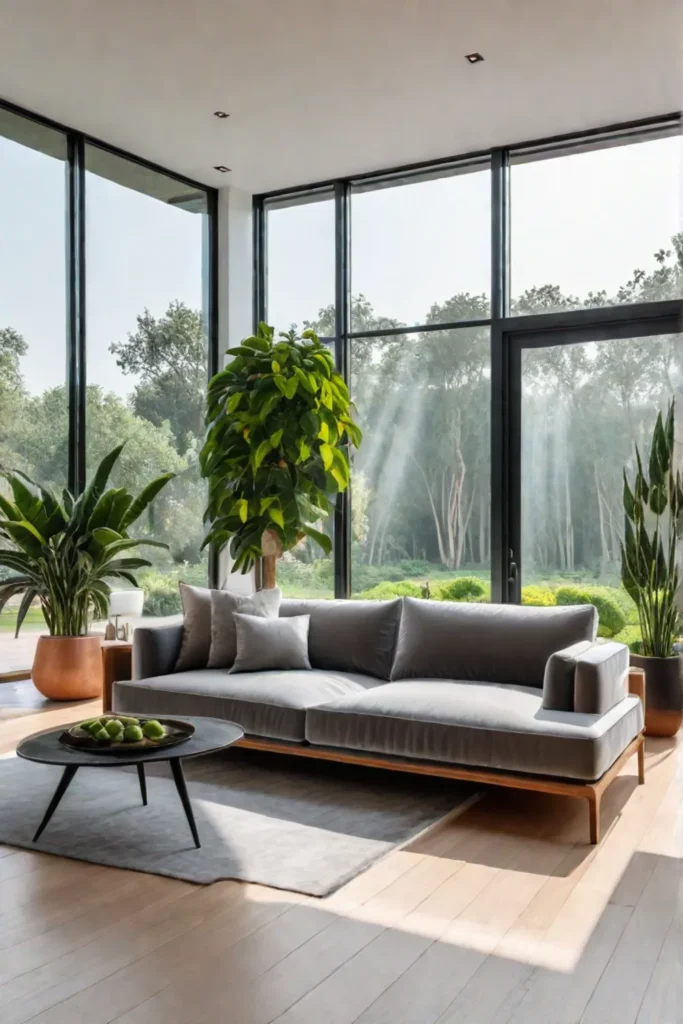
So, whether you’re a seasoned minimalist or just starting to dip your toes into this design style, get ready to discover a whole new world of possibilities beyond the classic white walls. Let’s dive in and transform your living room into a visually striking space and true to your style.
Neutral Tones as a Foundation
Neutral tones like beige, gray, and tan have long been the foundation of choice for minimalist living room design. And there’s a good reason—these timeless hues provide a clean, uncluttered backdrop that allows other design elements to shine.
But here’s the thing: you don’t have to stick to a strictly monochromatic palette to achieve that signature minimalist look. Incorporating a variety of neutral tones can add depth and warmth to your space. Think about it – a living room with a mix of soft grays, creamy beiges, and warm taupes has so much more visual interest than a room that’s just stark white.
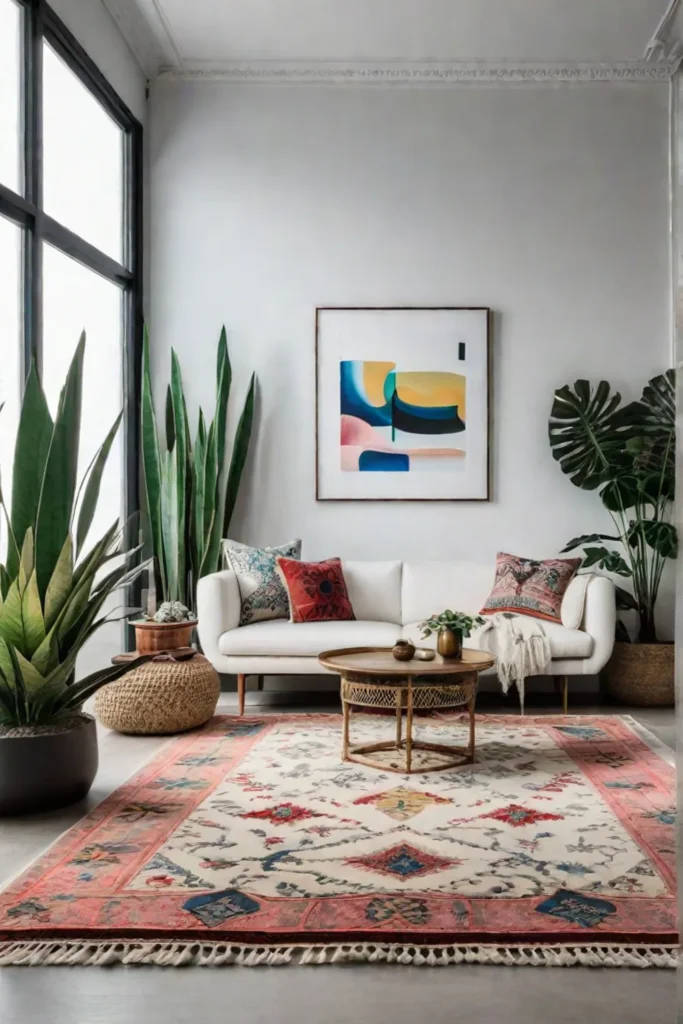
Mix and match different textures and materials to create this layered, neutral effect. For example, a plush velvet sofa in a muted gray tone paired with a natural jute rug and a wooden coffee table can instantly elevate the minimalist vibe. And don’t be afraid to play with proportions, too – a large, boxy armchair in a rich camel hue can balance out sleek, low-profile seating.
But it’s not just about the furniture and decor – the walls can also be a canvas for neutral experimentation. Instead of defaulting to a stark white, consider a soft, earthy beige or a warm, greige tone. These subtle shades can still provide that clean, uncluttered look but with more depth and character.
Let’s not forget about the power of natural elements. Incorporating wood, stone, and greenery into your minimalist living room can instantly warm up the space and add a touch of organic charm. Imagine a rustic wooden side table topped with a sculptural vase of fresh flowers or a sleek stone fireplace mantel adorned with simple candles. These natural accents instantly elevate the minimalist aesthetic, creating a harmonious and inviting atmosphere.
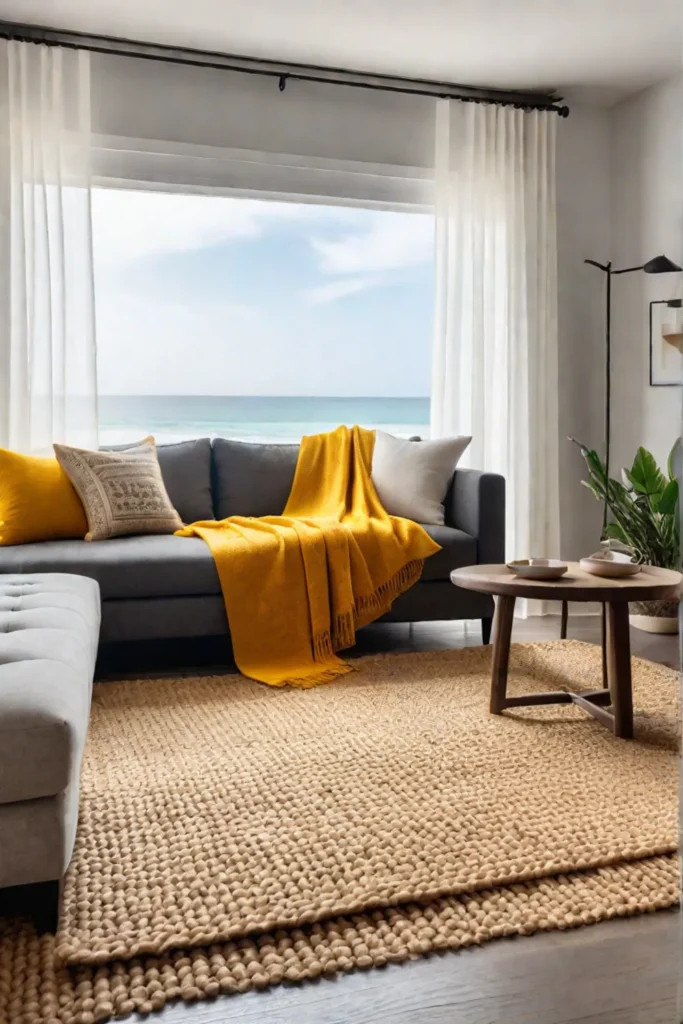
So, if you’re ready to move beyond the traditional all-white minimalist living room, I encourage you to embrace a more nuanced approach to neutral tones. Experiment with different textures, materials, and proportions to find the perfect balance that reflects your style. After all, minimalism doesn’t mean sacrificing warmth and character – it’s all about finding the right equilibrium between simplicity and sophistication.
Accent Colors: Pops of Vibrancy
I know what you’re thinking: “But Amanda if I stray too far from a neutral palette, won’t I compromise the minimalist look?” Well, my friends, I’m here to tell you that a vibrant color can enhance the minimalist aesthetic, adding depth, personality, and visual interest to your living room.
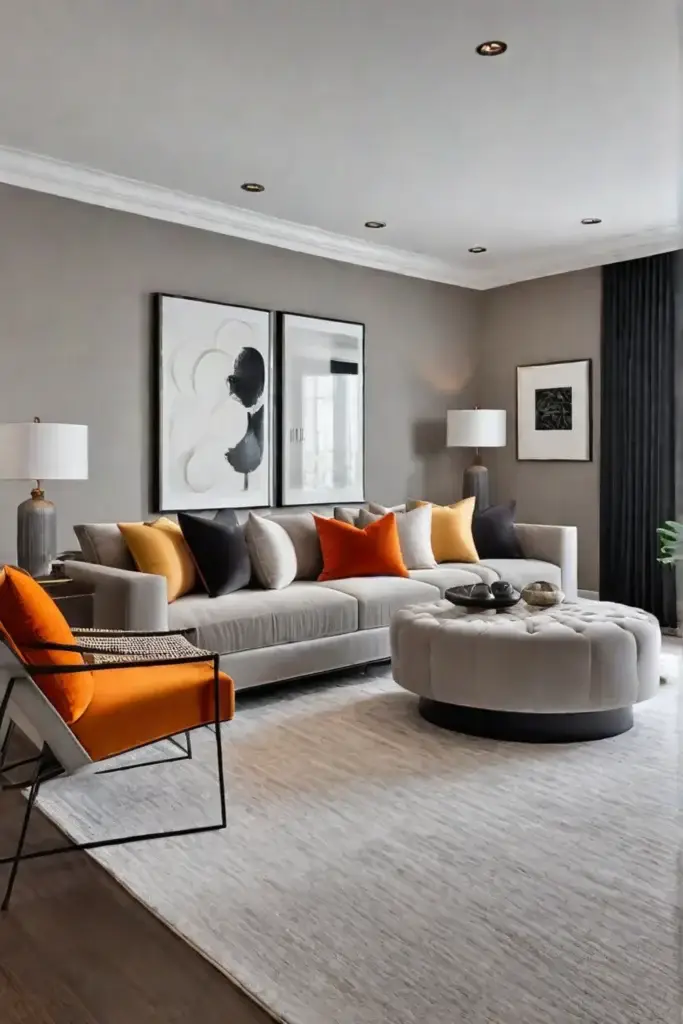
The key is to approach accent colors with intention and balance. It’s not about going overboard and creating a chaotic, cluttered space. Instead, it’s about strategically incorporating bold hues that complement your neutral foundation and elevate the overall design.
Think about it – a living room with crisp white walls and sleek, gray furniture can feel one-dimensional. But add a statement-making blue accent wall or a vibrant red throw pillow, and suddenly, the space comes alive with energy and personality. It’s all about finding that perfect equilibrium between simplicity and visual intrigue.
When choosing the right accent colors, I always recommend looking to the color wheel for inspiration. Complementary colors, like blue and orange or purple and yellow, can create a striking and harmonious contrast. Meanwhile, analogous colors like blue, green, and purple can lend a soothing, cohesive vibe.
And it’s not just about the wall color, my friends. Accent colors can be woven throughout your minimalist living room in various ways – through textiles, artwork, decorative accessories, and even lighting. Imagine a plush, velvet sofa in a rich, jewel-toned hue or a bold, abstract painting that anchors the space. These pops of color instantly add depth and character without compromising the clean, uncluttered aesthetic.
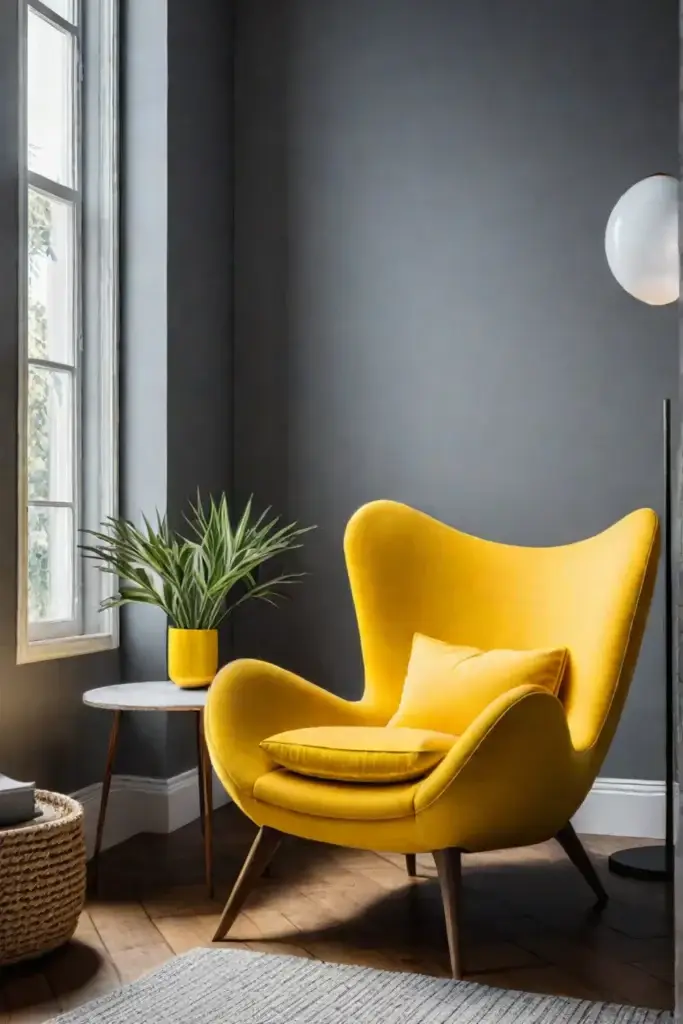
But remember, the key is to use accent colors judiciously. You don’t want to overwhelm the space and risk veering into maximalist territory. Instead, strategically place these vibrant hues to draw the eye to specific architectural features or design elements. Maybe a bright, yellow accent chair in front of a neutral-toned fireplace or a deep, emerald green throw pillow that complements the natural wood of your coffee table.
By carefully selecting and balancing your accent colors, you can create a minimalist living room that is visually striking and true to the design style’s principles. It’s all about finding that perfect harmony between simplicity and personality—and trust me, the results will be nothing short of stunning.
Texture and Natural Elements
As an interior designer with a deep appreciation for the warmth and beauty of natural materials, I firmly believe that texture and organic elements are essential in creating a truly inviting minimalist living room. After all, there’s something so soothing and grounding about surrounding yourself with the tactile and the natural.

Now, I know what you might be thinking – “But Amanda, won’t adding too much texture and natural elements disrupt the clean, uncluttered look of minimalism?” Well, my friends, it’s all about finding the right balance. By carefully incorporating these elements, you can enhance the minimalist aesthetic, adding depth, warmth, and visual interest to your living space.
Let’s start with texture. In a minimalist living room, using textiles can be a game-changer. Think plush velvet sofas, cozy wool throws, and lush linen curtains. These tactile materials instantly add a sense of coziness and sophistication, breaking up the stark, monochromatic palette and creating a truly inviting atmosphere.
And when it comes to natural materials, the possibilities are endless. Imagine a living room anchored by a stunning wooden coffee table, its organic grain and warm tones complementing the neutral color scheme. Or picture a sleek, stone fireplace mantel that grounds the space with its raw, earthy beauty. These natural elements add visual interest and a sense of biophilic harmony to the room.
But it’s not just about the furniture and architectural features. Living plants and greenery can also be a game-changer in a minimalist living room. They add a touch of vibrant color and lush texture and offer the added benefits of improved air quality and a soothing, calming ambiance.
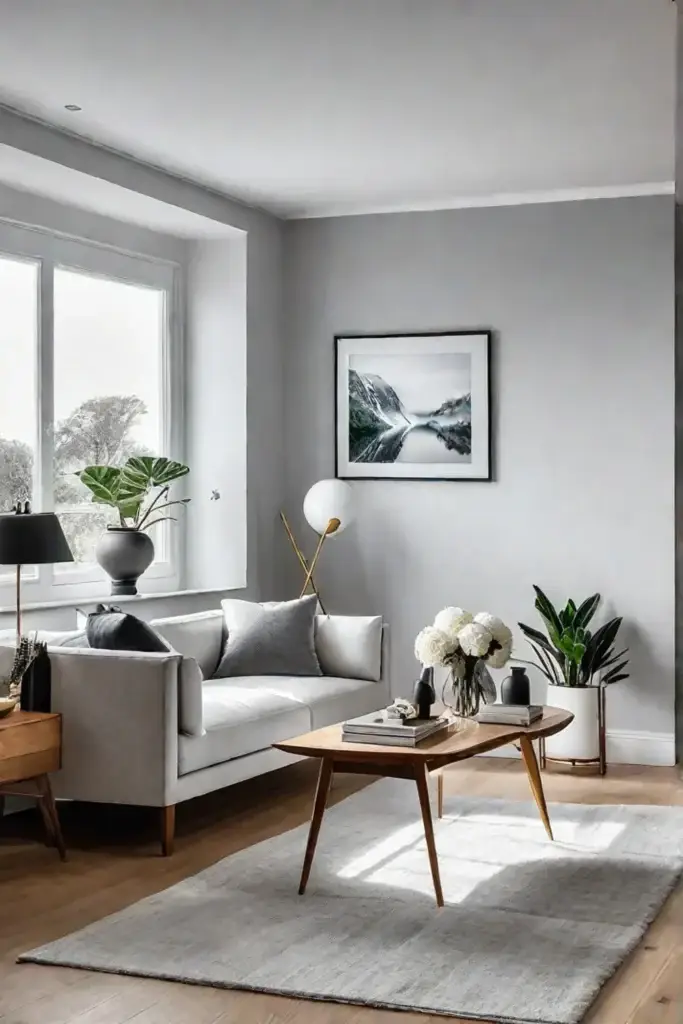
Now, I know what you might be thinking – “But Amanda, won’t all of these natural elements and textured pieces make the space feel cluttered and chaotic?” And that’s a valid concern. The key is to strike the right balance, carefully selecting and arranging these elements to complement the minimalist aesthetic rather than overwhelm it.
Maybe a plush, velvet armchair grounds the space, or a wooden side table adds warmth and character to a neutral-toned arrangement. Or perhaps a carefully curated gallery wall featuring natural materials and organic shapes adds visual interest without feeling busy or overwhelming.
The beauty of incorporating texture and natural elements into a minimalist living room is that you can make the space your own, infusing it with a sense of personality and warmth beyond the stark, monochromatic look. It’s all about finding that perfect equilibrium between simplicity and sensory delight – and trust me, the results will be nothing short of stunning.
Conclusion
In conclusion, my friends, the modern minimalist living room design embraces a more nuanced and intentional approach to color, texture, and natural elements. Moving beyond the traditional all-white palette and incorporating vibrant accent colors, diverse textures, and organic materials, you can create a visually striking living room that is true to the minimalist aesthetic.
Throughout this article, we’ve explored the key strategies and considerations for elevating your minimalist living room design. From using neutral tones as a foundation to strategically incorporating pops of vibrant color layering textiles and bringing in natural elements, I’ve shared my best tips and tricks to help you transform your space into a cozy, inviting haven.
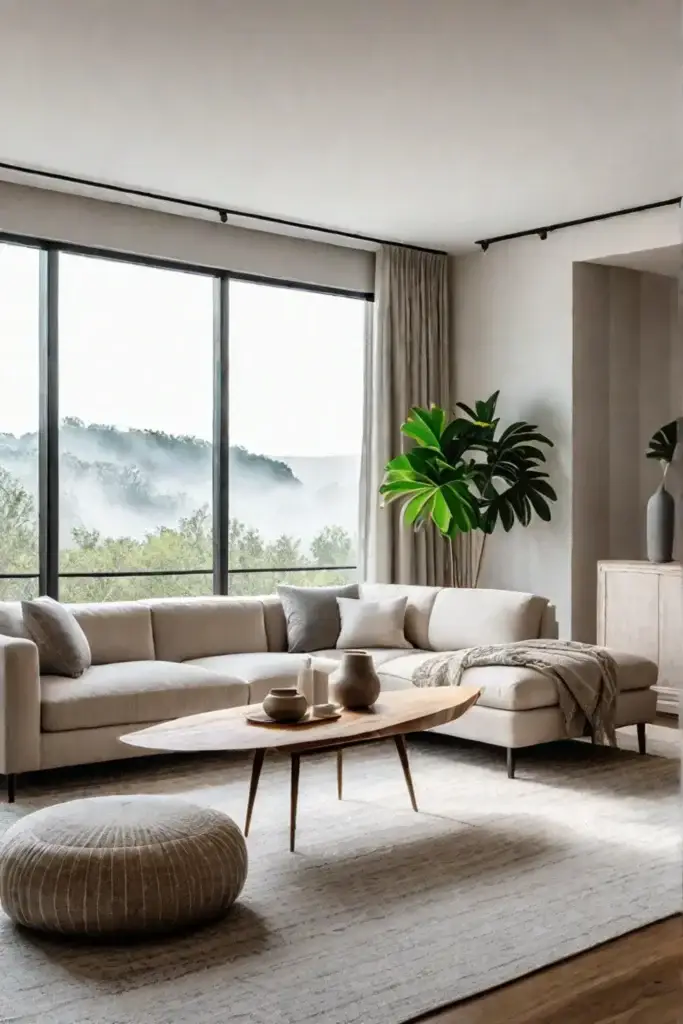
Remember, minimalism doesn’t have to mean sacrificing personality or warmth. In fact, by embracing a more diverse and intentional approach to design, you can create a living room that is both functional and visually captivating. So, whether you’re a seasoned minimalist or just starting to explore this design style, I encourage you to get creative, experiment, and, most importantly, have fun with it.
After all, your living room should reflect your style and how you want to live. So, why not infuse it with a touch of vibrant color, a hint of natural charm, and a lot of cozy, minimalist goodness? I promise the results will be nothing short of stunning.
So, what are you waiting for, my friends? It’s time to move beyond those stark white walls and embrace the endless possibilities of minimalist living room design. Happy decorating!
